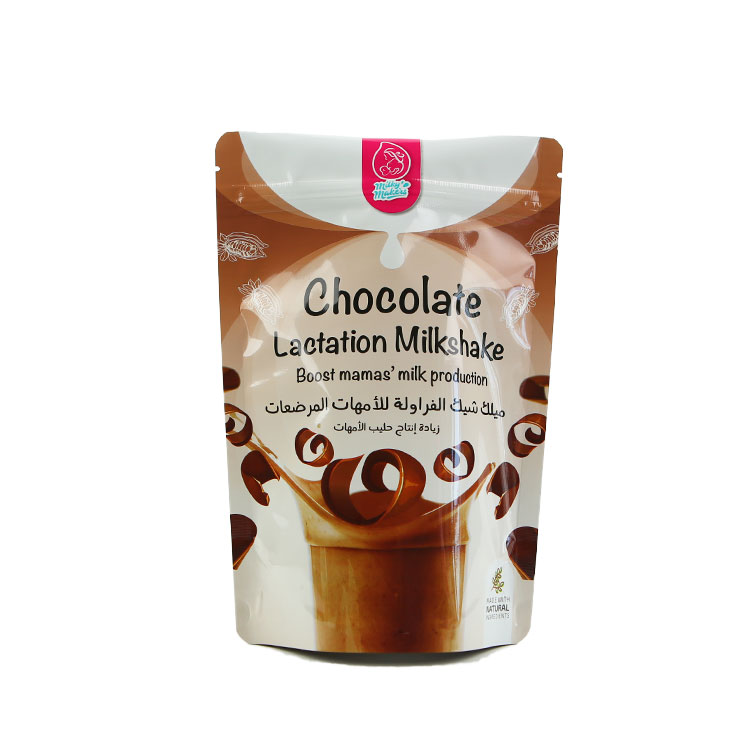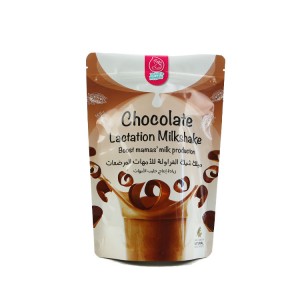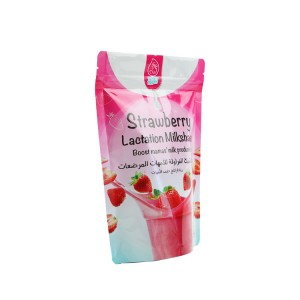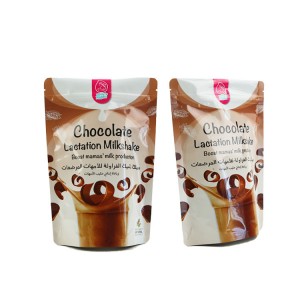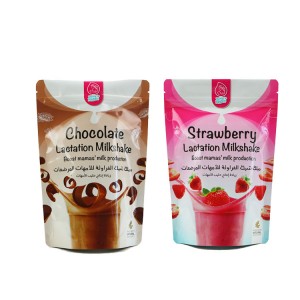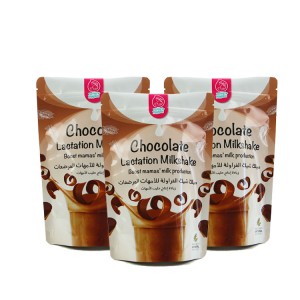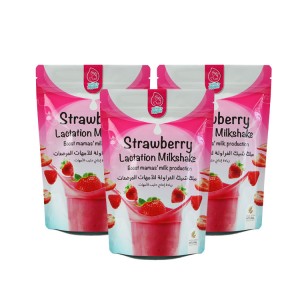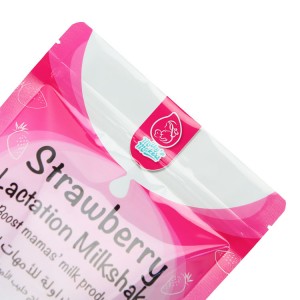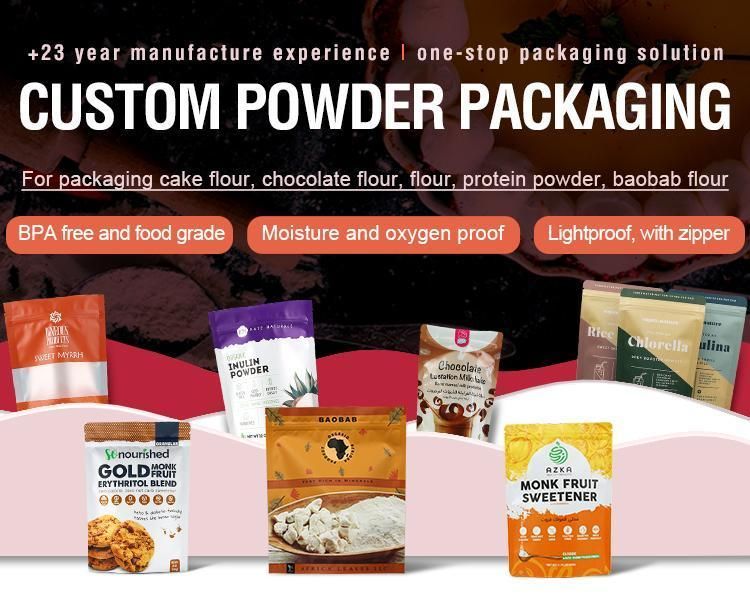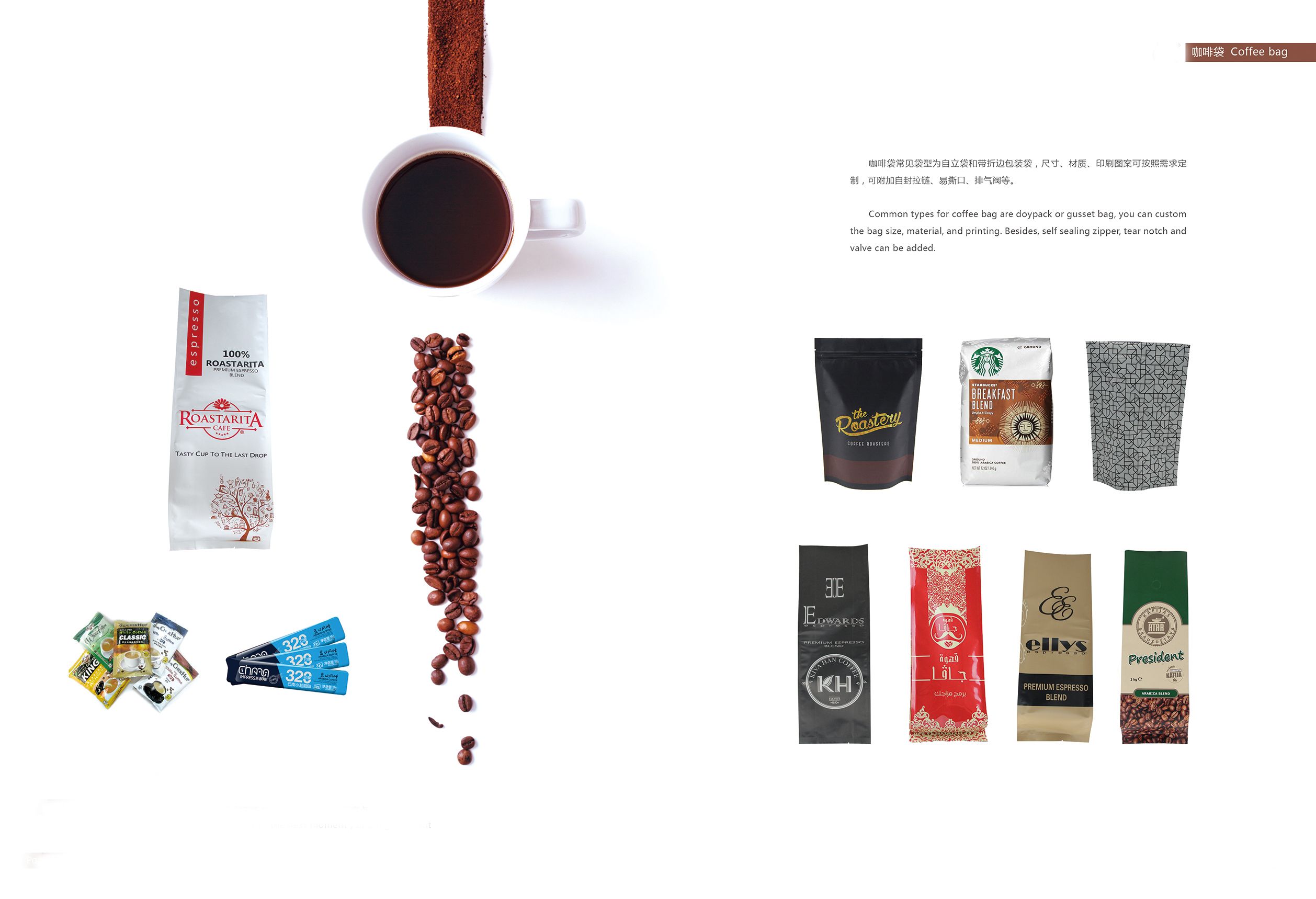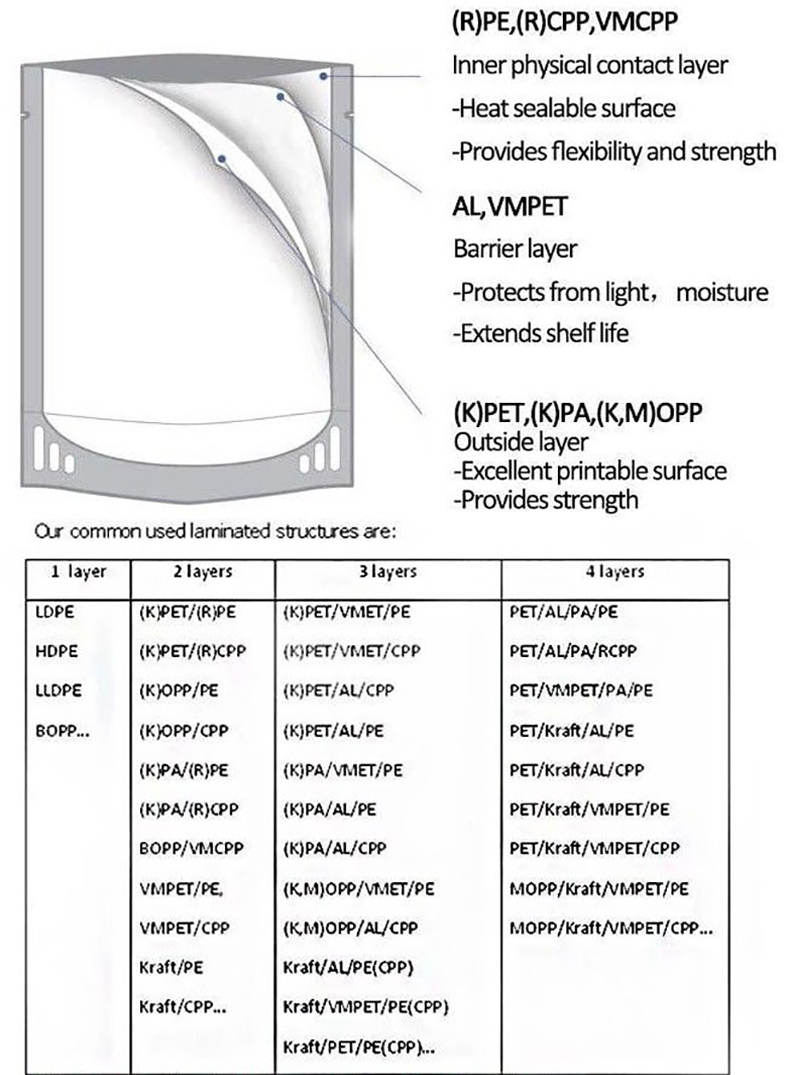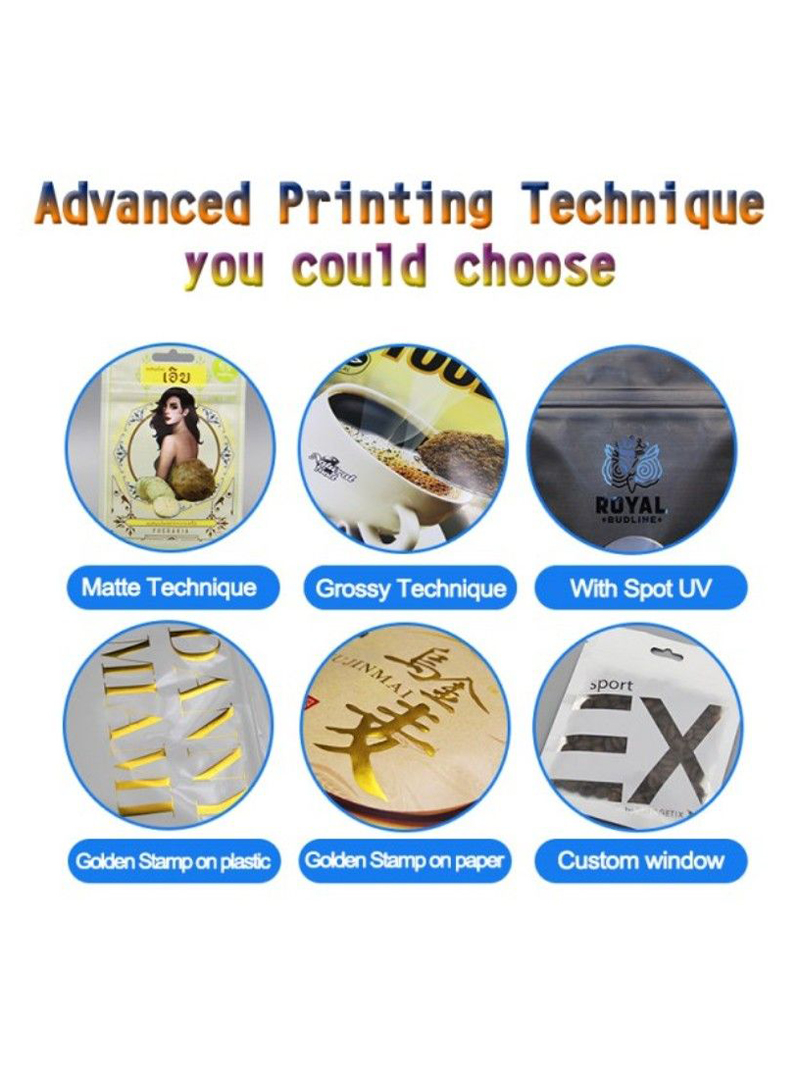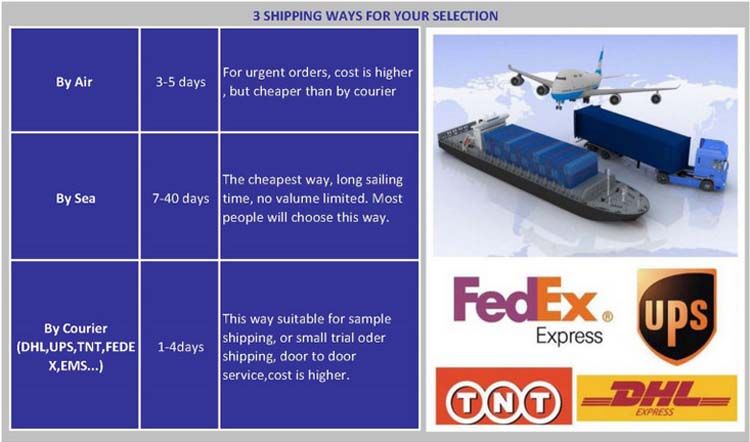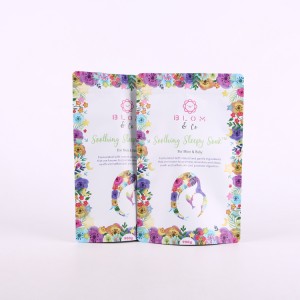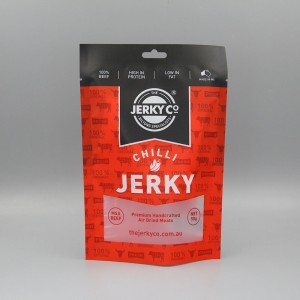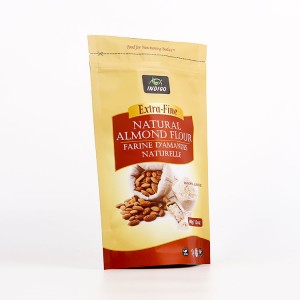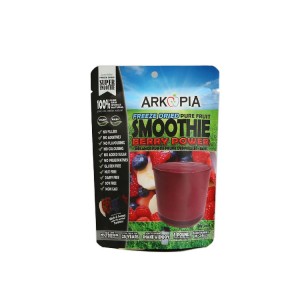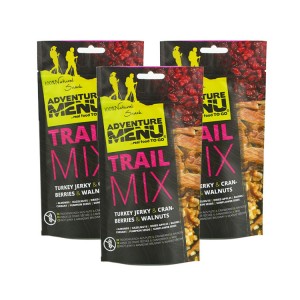
Products
250g Custom Printed Chocolate Powder, Cake Powder, Powder Packaging
250g Custom Printed Chocolate Powder Packaging
1.Material Selection:
Food-Grade Materials: Ensure that the packaging material is food-grade and compliant with relevant food safety regulations. Common materials include laminated films, polyethylene (PE), polypropylene (PP), and metallized films.
Moisture and Oxygen Barriers: Choose materials with moisture and oxygen barrier properties to protect the powdered products from moisture absorption and oxidation, which can affect quality and shelf life.
2. Bag Style:
Flat Pouches: These are simple, flat bags suitable for various powder products.
Stand-Up Pouches: Stand-up pouches are self-supporting and provide excellent visibility on store shelves.
Gusseted Bags: Gusseted bags have expandable sides that allow for more significant volume capacity.
Quad-Seal Bags: Quad-seal bags have reinforced corners that provide added strength and support.
3. Size and Capacity:
Determine the appropriate bag size and capacity to accommodate the volume of chocolate powder, cake powder, or other powdered products.
4. Closure Mechanism:
Common closure options include heat-sealing, zip-lock closures, resealable zippers, and adhesive strips. Resealable closures are convenient for consumers to reseal the bag after use.
5. Printing and Branding:
Custom printing allows you to add branding elements, product information, labels, barcodes, and promotional graphics to the packaging for marketing purposes.
6. Window Features:
Clear windows or transparent panels in the bag design can showcase the product, allowing consumers to see the quality and texture of the powder inside.
7. Tear Notches:
Tear notches or easy-open features facilitate effortless opening of the packaging without the need for scissors or other tools.
8. Regulatory Compliance:
Ensure that the packaging complies with relevant food safety regulations, including allergen labeling, nutritional facts, ingredient lists, and any other required information.
9. Sustainability:
Consider eco-friendly packaging options, such as recyclable materials or biodegradable films, to align with sustainability goals and consumer preferences.
10. Quantity and Ordering:
Determine the quantity of bags needed and consider minimum order requirements when selecting a supplier or manufacturer.
11. Quality Control:
Ensure that the packaging supplier has robust quality control processes in place to maintain consistency and product integrity.
12. Sampling and Prototyping:
Some manufacturers offer sampling and prototyping services, allowing you to test the packaging before full-scale production.
We also have the following range of bags for your reference.
A: Our factory MOQ is a roll of cloth, it’s 6000m long, about 6561 yard. So it depend on your bag size, you can let our sales figure it for you.
A: The production time is about 18-22 days.
A: Yes, but we don’t suggest make a sample, the model cost is too expensive.
A: Our designer can make your design on our model, we will confirm with you can produce it according to the design.

